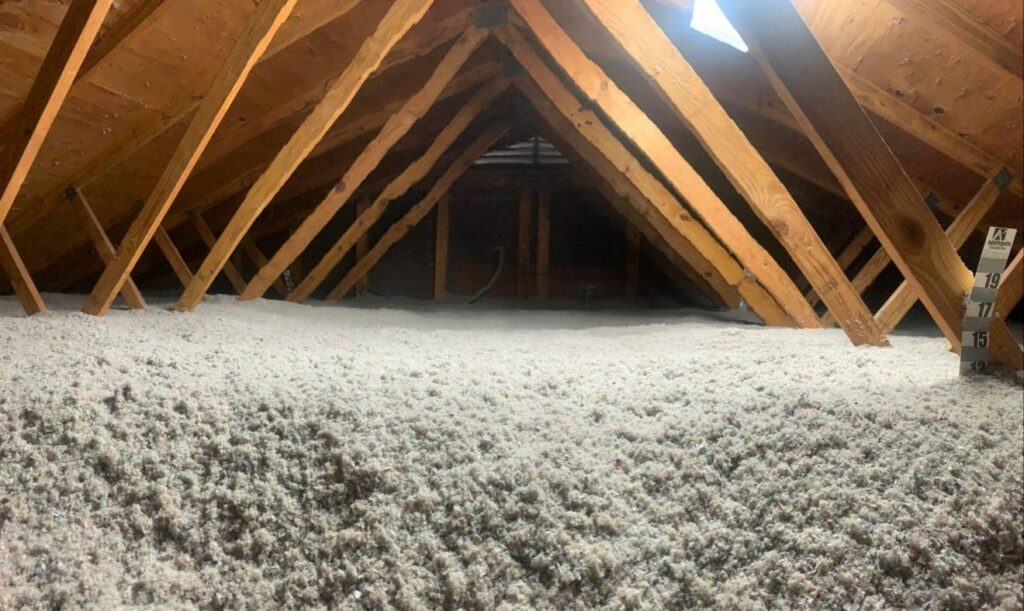Winterizing Your Home: Essential Tips for a Cozy and Energy-Efficient Season
As the days grow shorter and the temperature drops, it’s time to prepare your home for the winter months ahead. Winterizing your home is not only about staying warm and comfortable but also about saving on energy costs. Three key areas to focus on when winterizing your home are the roofing, attic insulation, and gutters. In this blog, we’ll explore these critical aspects and provide you with valuable tips to keep your home cozy and energy-efficient throughout the winter.

Roofing
Your roof is your first line of defense against the harsh elements of winter. Ensuring that it’s in tip-top shape is crucial for maintaining a warm and dry interior. Here are some essential tips for winterizing your roof:
- Inspect for Damage: Before winter arrives, it’s essential to inspect your roof for any signs of damage. Look for missing or damaged shingles, leaks, and any other issues. Repairing any damage now will prevent it from getting worse during the winter.
- Clear Debris: Leaves, twigs, and other debris can accumulate in your gutters and on your roof, creating blockages and trapping moisture. This can lead to water damage and ice dams. Clear your gutters and remove any debris from your roof to prevent these issues.
- Check for Leaks: One of the most critical aspects of winterizing your roof is to check for leaks. Inspect your attic and ceiling for any signs of water damage or staining. Address any leaks promptly to avoid costly repairs later on.
- Insulate Your Attic: Proper attic insulation can prevent warm air from escaping through your roof. Inadequate insulation can lead to ice dams and higher energy bills. Consider adding or upgrading insulation in your attic to keep your home warmer and more energy-efficient during the winter.

Attic Insulation
A well-insulated attic is essential for maintaining a comfortable indoor temperature and reducing energy consumption during the winter months. Here are some tips for improving your attic insulation:
- Evaluate Your Current Insulation: Before making any changes, assess your attic’s current insulation. Different regions have different insulation needs, so it’s essential to ensure your attic is appropriately insulated for your climate.
- Choose the Right Insulation Material: There are various insulation materials available, including fiberglass, cellulose, and spray foam. Each has its pros and cons, so consult with a professional or do your research to determine the best choice for your home.
- Seal Gaps and Cracks: In addition to adding insulation, sealing any gaps or cracks in your attic is essential. These openings can allow cold air to infiltrate your living spaces and decrease your home’s overall energy efficiency.
- Insulate Attic Access Points: Don’t forget to insulate access points to your attic, such as doors or hatches. Weatherstripping and adding insulation around these areas will help maintain a consistent temperature throughout your home.
- Consider a Professional Audit: If you’re uncertain about your attic insulation, consider hiring a professional to conduct an energy audit. They can identify areas of improvement and provide recommendations tailored to your home’s needs.

Gutters
Gutters play a vital role in protecting your home’s foundation and preventing water damage. During winter, they become even more critical as they help manage the flow of melting snow and ice. Here’s how to prepare your gutters for the cold season:
- Clean Your Gutters: One of the most important tasks before winter is to clean your gutters thoroughly. Remove leaves, twigs, and debris that have accumulated during the fall. Clogged gutters can lead to ice dams and water damage.
- Check for Damage: Inspect your gutters for any signs of damage, such as rust, holes, or loose fasteners. Address these issues before winter arrives to ensure your gutters can effectively channel water away from your home.
- Install Gutter Guards: Consider installing gutter guards to prevent leaves and debris from entering your gutters in the first place. Gutter guards can save you time and effort on maintenance and reduce the risk of clogs during the winter.
- Ensure Proper Sloping: Gutters should be sloped slightly to allow water to flow toward the downspouts. Check that your gutters have the correct slope to prevent water from accumulating and freezing, which can lead to ice dams.
- Downspout Extensions: Make sure your downspouts have extensions that direct water at least a few feet away from your home’s foundation. This helps prevent water from seeping into your basement or causing foundation damage.

Winterizing your home is a crucial step in ensuring a comfortable and energy-efficient winter season. By focusing on your roofing, attic insulation, and gutters, you can address key areas that impact your home’s overall well-being. These tips will not only keep your home warm and cozy but also help you save on energy costs. Don’t wait until the first snowfall – start your winter preparations today to enjoy a worry-free winter season.

